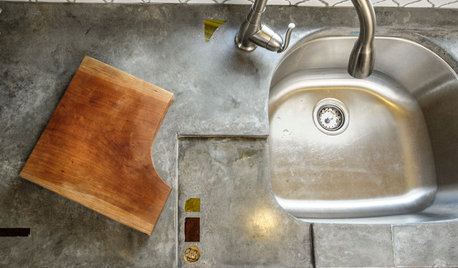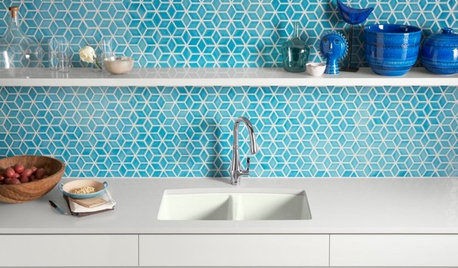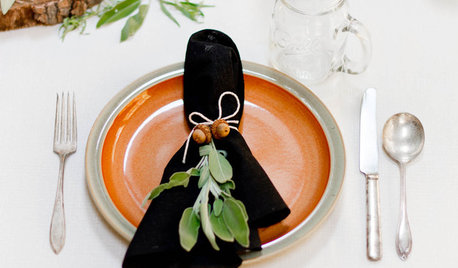what do you call the liquid that drains off the worm casting?
John near Toledo
10 years ago
Related Stories

GARDENING GUIDESHouzz TV: Make a Worm Bin for Rich Soil and Happy Plants
A worm-powered compost bin that can fit under a sink turns food scraps into a powerful amendment for your garden. Here’s how to make one
Full Story
KITCHEN COUNTERTOPSCast Concrete Countertops With a Personal Twist
From frame making to pouring to inlays, learn how concrete counters are cast — and how an artisan embellishes them
Full Story
KITCHEN DESIGNKitchen Sinks: Enameled Cast Iron for Attractive Durability
Strong, shiny and sustainable, an enameled cast iron sink can bring character to your kitchen
Full Story
BATHROOM DESIGNHow to Choose the Best Drain for Your Shower
Don't settle for a cheap fix when you can pick a shower drain that suits your style preferences and renovation codes alike
Full Story
KITCHEN DESIGNHouzz Call: What’s Cooking in Your Kitchen?
Most of us turn to recipes, videos and culinary shows when we cook. Where do you set your cookbook, tablet or TV screen?
Full Story
GREEN BUILDINGOff the Grid: Ready to Pull the Plug on City Power?
What to consider if you want to stop relying on public utilities — or just have a more energy-efficient home
Full Story
LIFEHouzz Call: Show Us Your Nutty Home Fixes
If you've masterminded a solution — silly or ingenious — to a home issue, we want to know
Full Story

GREEN BUILDINGHouzz Call: What Have You Salvaged for Home Use?
If your floors, furniture, exterior materials or other home elements have a past life, we'd like to hear the story
Full Story
LAUNDRY ROOMSHouzz Call: Show Us Your Wonderfully Efficient Laundry Room
Got a drying rack, a folding table or clever storage in your laundry room? We want to see it!
Full Story





boredsogarden
chuckiebtoo
Related Professionals
Cottonwood Landscape Architects & Landscape Designers · Gainesville Landscape Contractors · Biloxi Landscape Contractors · Lyndhurst Landscape Contractors · Mahwah Landscape Contractors · North Lauderdale Landscape Contractors · Salem Landscape Contractors · Setauket-East Setauket Landscape Contractors · Palos Heights Landscape Contractors · Pooler General Contractors · American Canyon General Contractors · Chillicothe General Contractors · Markham General Contractors · Monroe General Contractors · Springfield General Contractorsmendopete
John near ToledoOriginal Author
chuckiebtoo
equinoxequinox
hummersteve
equinoxequinox
John near ToledoOriginal Author
Jasdip
hummersteve
chuckiebtoo
pskvorc
chuckiebtoo
hummersteve
hummersteve
Jasdip